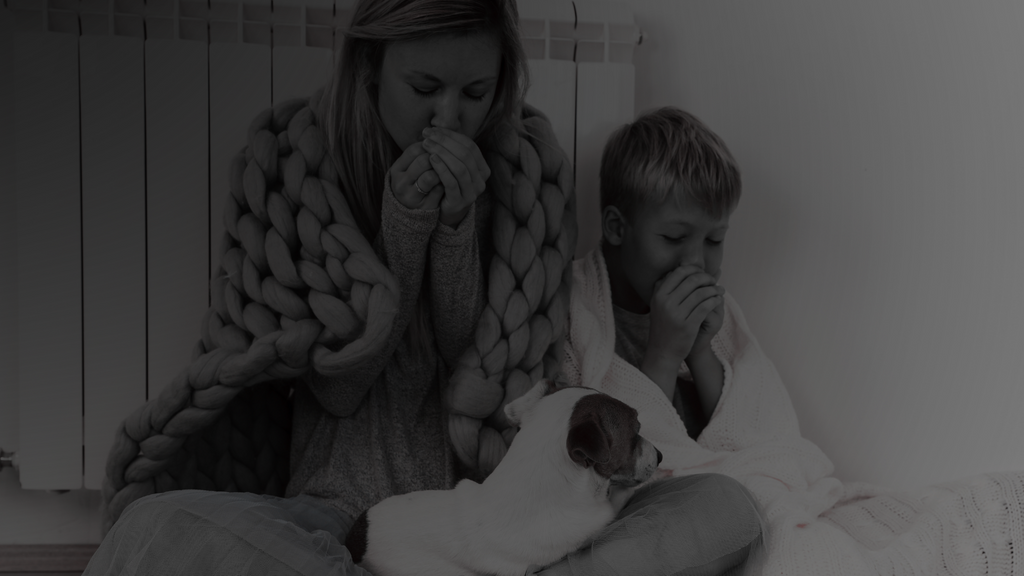
Does Your Emergency Gear Work Without You?
Mike thought he had emergency planning all figured out. Generator in the garage, ready to go. Two weeks of food in the pantry and freezer, and one month of emergency freeze-dried food in the basement, check.Filled and treated water tanks and water filter, solar lights, camp stove and fuel, check. First aid supplies and emergency go bags for a fire or evacuation, check. He'd spent months getting everything just right to ensure they had supplies.
He left town Wednesday morning for a quick meeting but was returning later that day. Temperatures dropped unexpectedly and the expected light snowstorm quickly turned into a dangerous ice storm, turning the roads into sheets of ice. Mike had to stay put that evening, hoping that by morning the roads would be drivable.
Lisa chatted with Mike, letting him know she was leaving work to pick up the kids before the roads turned dangerous and they’d all be safe at home when he arrived later. They made it home just before the power went out around noon. The cell towers were overloaded, and she couldn’t reach Mike again. She had no idea how to start the generator. She'd watched Mike test it once, but where was the manual? She was afraid she’d break it and it was expensive, so she gave up.
Lisa knew the camp stove was somewhere in the basement storage room with other supplies, but she couldn't remember which box and Mike forgot to label them. The water barrels were there too, but how do you get water out of those things, and did she need to filter it first? If that was the case, she needed to find the filter too. Mike had always handled that stuff. She decided to wait for him to return later.
As the house grew colder, Lisa began to worry and felt helpless, despite all the gear stacked in the basement. By evening, she and the kids were huddled together under multiple blankets, eating cereal and cold soup. Mike must have gotten stuck and not been able to get home. The house got colder by the hour, but at least the solar lights were easy to figure out. All of Mike's perfect emergency gear was right there in the house with them, but it might as well have been on Mars.
When Mike finally made it home late the next day, he found his family cold and hungry, with thousands of dollars of unused emergency supplies within reach. His plan was perfect, except for one huge problem: only he knew how to use any of it.
The Family Factor
His perfect emergency plan had one giant hole: it assumed they’d all be together when disaster struck.
Many emergency plans have this same blind spot. Only thinking of the disaster scenarios when everyone is home and cozy. But real emergencies don’t follow schedules or weather patterns.
What Can Happen
When disaster strikes during the day, you might be dealing with:
• Kids stuck at school.
• You’re stuck at work with only a granola bar in your desk.
• Roads blocked or too dangerous to drive.
• You’re stuck in your car, in an accident waiting to happen, traffic mess.
• Cell towers down, so no communication.
• Everyone trying to get home at the same time with traffic lights out.
• Good supplies at home, but you are not there.
• Family having no knowledge how to use them without you.
Action Items to Focus on Now
Teach everyone how to use your gear
• Walk each family member through starting the generator, lighting the camp stove, and accessing water from storage.
• Label boxes and write simple step-by-step instructions as back-up to include with the equipment.
• Let everyone practice with supervision, not during an emergency.
Set up communication backup
• Choose an out-of-state relative or friend as your family contact point.
• Put the number into everyone's phone.
• Test calling them during a busy time to make sure it works.
• Have a safe word established so you know it’s really them calling.
Spread supplies around
• Keep a 3-day kit in your car with water, snacks, blanket, and basic first aid.
• Put a few stable snacks in your kids backpack.
• Store some supplies at work.
Plan for being separated
• Ask about your school emergency plan.
• Decide who picks up kids if schools close early (have a designated back-up).
• Pick two meeting spots: one near home and one across town.
• Drive alternate routes during rush hour occasionally so you know which roads are open and which are easily blocked with traffic or construction.
Practice when it’s not an emergency
• Run regular “power out” drills at home.
• Discover how long it can take to get from work to school or home during bad weather.
The key is making this routine and familiar before you need it, not figuring it out when the power’s already out.
The Simple Truth
Your emergency plan needs to work for wherever you are, not just at home where all your stuff is when trouble hits. Emergency preparation isn’t about just buying supplies and fancy gear; it’s about making sure your family can use it if you are not there for guidance when life gets turned upside down at the worst possible moment.
Tags
- All
- 25 year food
- 25 year shelf life food
- 72 hour kit
- Best food storage types
- Best long-term food storage
- Blizzard preparedness
- Budgeting
- canning
- Certified GMO-free Emergency foods
- Certified GMO-free foods
- Coffee
- Comparison of emergency food methods
- Composting tips
- Dangers of genetically modified foods
- dehydrated food
- Edible Wild Plants
- emergcy preparedness
- Emergency Cooking
- Emergency Food
- Emergency food Christmas gifts
- emergency food storage
- Emergency Food Supply
- Emergency food supply recommendations
- Emergency Planning
- Emergency Preparedness
- Emergency preparedness advice
- emergency preparednesss
- Emergency Supplies
- Emergency supplies checklist
- Emergency Survival
- emergency survival gear
- Emergency survival kit checklist
- Emergency Survival skills
- exercise
- Family emergency preparedness
- Family emergency preparedness plan
- Family Preparedness
- Food Storage
- Food storage 25 year shelf life
- Food storage amounts
- Food storage Christmas
- Food storage containers long term
- Food Storage Secrets
- Food storage serving size
- Food storage types compared
- freeze dried food
- Freeze dried food storage
- freeze dried meats
- Freeze-dried emergency food storage
- Fruit Trees
- Gardening
- Getting Started
- Gluten-free food Storage
- Gourmet emergency food
- Healthy food storage
- How much emergency food to store
- Improved emergency preparedness
- Jared Markin
- Jared Matkin
- Legacy Premium
- Lessons learned from Hurricane Sandy
- Lessons learned from natural disasters
- long-term food storage
- Long-term Food Storage Guidelines
- Long-term Food Storage tips
- Long-term water storage
- Mental Emergency Preparedness
- Mental toughness
- Money-saving tips
- Natural disaster planning
- Natural Disasters
- Perfect Christmas gifts
- Pet Emergency preparedness checklist
- Pet Emergency preparedness kit
- Pet Emergency Survival tips
- Pets and Emergency Preparedness
- Plant Foraging
- portable solar panels
- portable solar power
- portable water filters
- protein drinks
- Risk of genetic modification
- Seed saving and storage
- Seed saving guide
- Self-reliance
- Self-reliant practices
- Shelf Life
- Solar Cooking
- Solar Ovens
- Special Dietary needs
- Stranded in a car in a blizzard
- Survival food
- Survival Gear
- survival kit
- Survival kits
- Survival Ovens
- Survival Skills
- survivalist gear
- suvival kit
- Tree Pruning tips
- Tree Trimming basics
- unique ideas
- water bottle with filter
- water filter
- water filter straw
- water filters
- Water Filtration
- water pitcher with filter
- water pitchers with filters
- Water purification
- Wild Food Foraging
- Winter composting
- Winter driving
- Winter preparedness tips
- Winter storm preparedness tips
- Winter Survival







